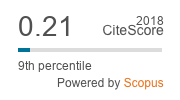Avaliação de Discriminação contra Idosos em Contexto Brasileiro ”“
Ageismo
Mots-clés :
Discriminação, Idoso, Ageism Survey, Brasil, EstresseRésumé
Buscou-se identificar os tipos predominantes de discriminação contra idosos que ocorrem no Brasil, bem como o nível de estresse que lhes está associado. Compararam-se também os resultados da amostra brasileira aos de duas amostras de referência, uma americana e uma portuguesa. Participaram 111 indivíduos, os quais responderam a um questionário biosociodemográfico e ao Ageism Survey, que integra itens relativos a estereótipos negativos, atitudes e comportamentos de discriminação face ao idoso. Os resultados revelaram que os tipos de discriminação predominantes foram os relativos aos contextos sociais e de saúde. Quanto ao nível de estresse, a maior parte dos itens apresentou uma baixa média de estresse. Isso pode indicar que a vivência de discriminação nem sempre se associa explicitamente ao estresse.
Téléchargements
Références
Carstensen, L., & Hartel, C. R. (2006). Opportunities lost: The impact of stereotypes on self and others. Em L. Carstensen & C. R. Hartel (Eds.), When I’m 64 (pp. 80-91). Washington DC: Committee on Aging Frontiers in Social Psychology, Personality, and Adult Developmental Psychology.
Crocker, C., & Major, B. (1989). Social stigma and self-esteem: The self-protective properties of stigma. Psychological Review, 96, 608-630.
Cuddy, A. J. C., & Fiske, S. T. (2002). Doddering but dear: Process, content, and function in stereotyping of older person. Em T. Nelson (Ed.), Ageism ”“ Stereotyping and prejudice against older persons (pp. 3-26). Cambridge: Bradford Books.
Cuddy, A. J. C., Norton, M. I., & Fiske, S. T. (2005). This old stereotype: The pervasiveness and persistence of the elderly stereotype. Journal of Social Issues, 61, 267-285.
Ferreira-Alves, J., & Novo, R. F. (2006). Avaliação da discriminação social de pessoas idosas em Portugal. International Journal of Clinical and Health Psychology, 6, 65-77.
Hess, T. M., Hinson, J. T., & Statham, J. A. (2004). Explicit and implicit stereotype activation effects on memory: Do age and awareness moderate the impact of priming? Psychology and Aging, 19, 495-505.
Kite, M. E., & Wagner, L. S. (2002). Attitudes toward older adults. Em T. Nelson (Ed.), Ageism ”“ Stereotyping and prejudice against older persons (pp. 129-161). Cambridge: Bradford Books.
Levy, B. (1996). Improving memory in old age by implicit self-stereotyping. Journal of Personality and Social Psychology, 71, 1092-1107.
Levy, B. (2003). Mind matters: Cognitive and physical effects of aging selfstereotypes. Journal of Gerontology: Psychological Sciences, 58B, 203-211.
Levy, B., Ashman, O., & Dror, I. (2000). To be or not to be: The effects of aging stereotypes on the will to live. OMEGA, 40, 409-420.
Levy, B., & Banaji, M. R. (2002). Implicit ageism. Em T. Nelson (Ed.), Ageism ”“ Stereotyping and prejudice against older persons (pp. 49-75). Cambridge: Bradford Books.
Levy, B., & Langer, E. (1994). Aging free from negative stereotypes: Successful memory in China among the American deaf. Journal of Personality and Social Psychology, 66, 989-997.
Minichiello, V., Browne, J., & Kendig, H. (2000). Perceptions and consequences of ageism: Views of older people, Aging and Society, 20, 253-278.
Nelson, T. (2005). Ageism: Prejudice against our feared future self. Journal of Social Issues, 61, 207-221.
Neri, A. L. (2005). Palavras-chave em gerontologia. Campinas: Alínea.
Nussbaum, J. F., Pitts, M. J., Huber, F. N., Krieger, J. R. L., & Ohs, J. E. (2005). Ageism and ageist language across the life span: Intimate relationships and non-intimate interactions. Journal of Social Issues, 61, 287-305.
Palmore, E. B. (2001). The Ageism Survey: First findings. The Gerontologist, 41, 572-575.
Palmore, E. B. (2004). Research note: Ageism in Canada and the United States. Journal of Cross-Cultural Gerontology, 19, 41-46.
Pinquart, M. (2002). Good news about the effects of bad old-age stereotypes. Experimental Aging Research, 28, 317-336.
Rothermund, K., & Brandstädter, J. (2003). Age stereotypes and self-views in later life: Evaluating rival assumptions. International Journal of Behavioral Development, 27, 549-554.
Veloz, M. C. T., Nascimento-Schulze, C. M., & Camargo, B. V. (1999). Representações sociais do envelhecimento. Psicologia Reflexão e Crítica, 12, 479-501.
Wentura, D., & Brandstädter, J. (2003). Age stereotypes in younger and older women: Analyses of accommodative shifts with a sentence-priming task. Experimental Psychology, 50, 16-26.
Wentura, D., Dräger, D., & Brandstäter, J. (1997). Alternsstereotype im frühen und höheren Erwachsenenalter: Analyse akkommodativer Veränderungen anhand einer Satzpriming-Technik [Age stereotypes in early and late adulthood: Analyses of accommodative shifts in a sentence-priming task]. Zeitschrift für Sozialpsychologie, 28, 109-128.
Yunes, M. A. M. & Szymanski, H. (2001). Resiliência: noção, conceitos afins e considerações críticas. Em J. Tavares (Ed.) Resiliência e educação (pp. 13-42). São Paulo: Cortez.



